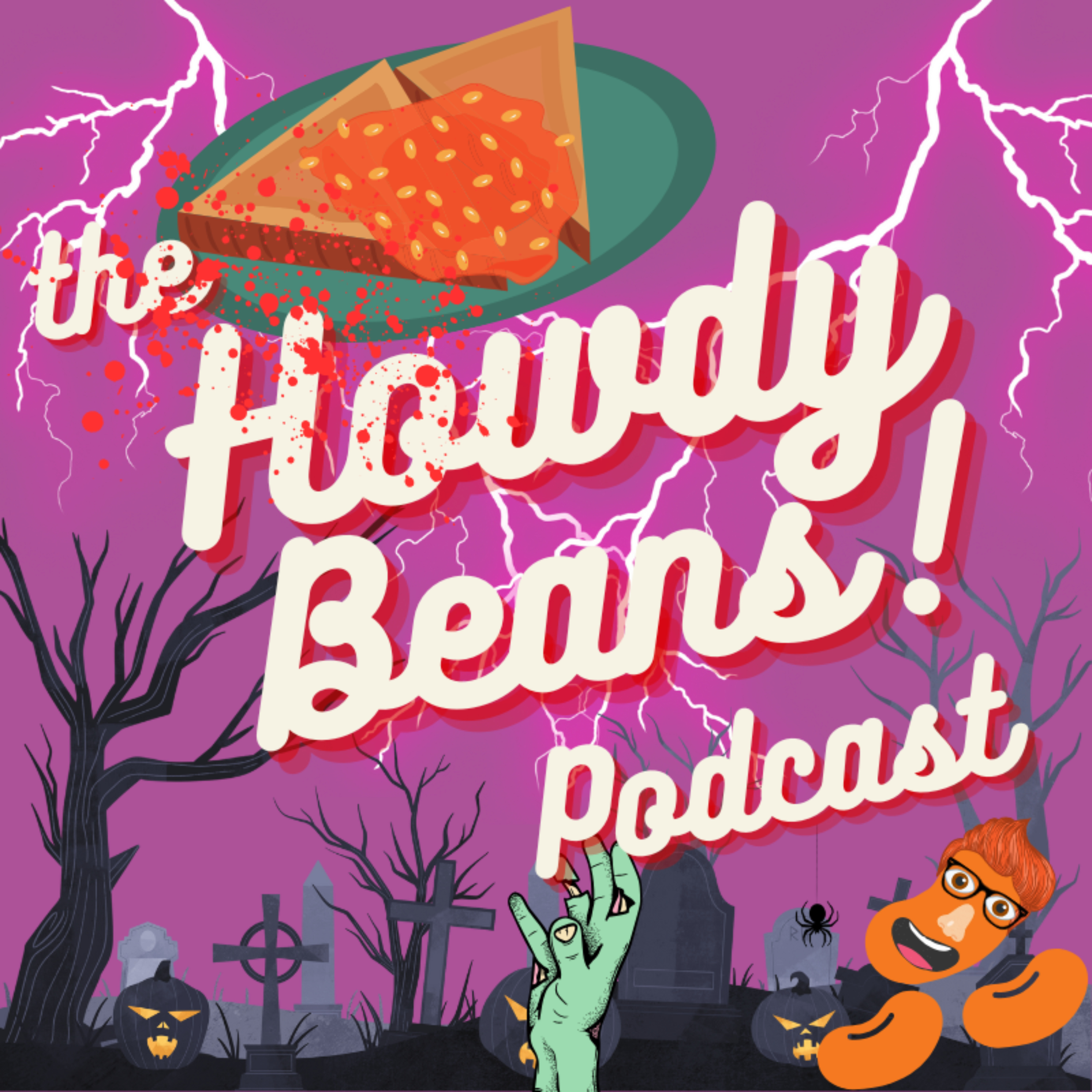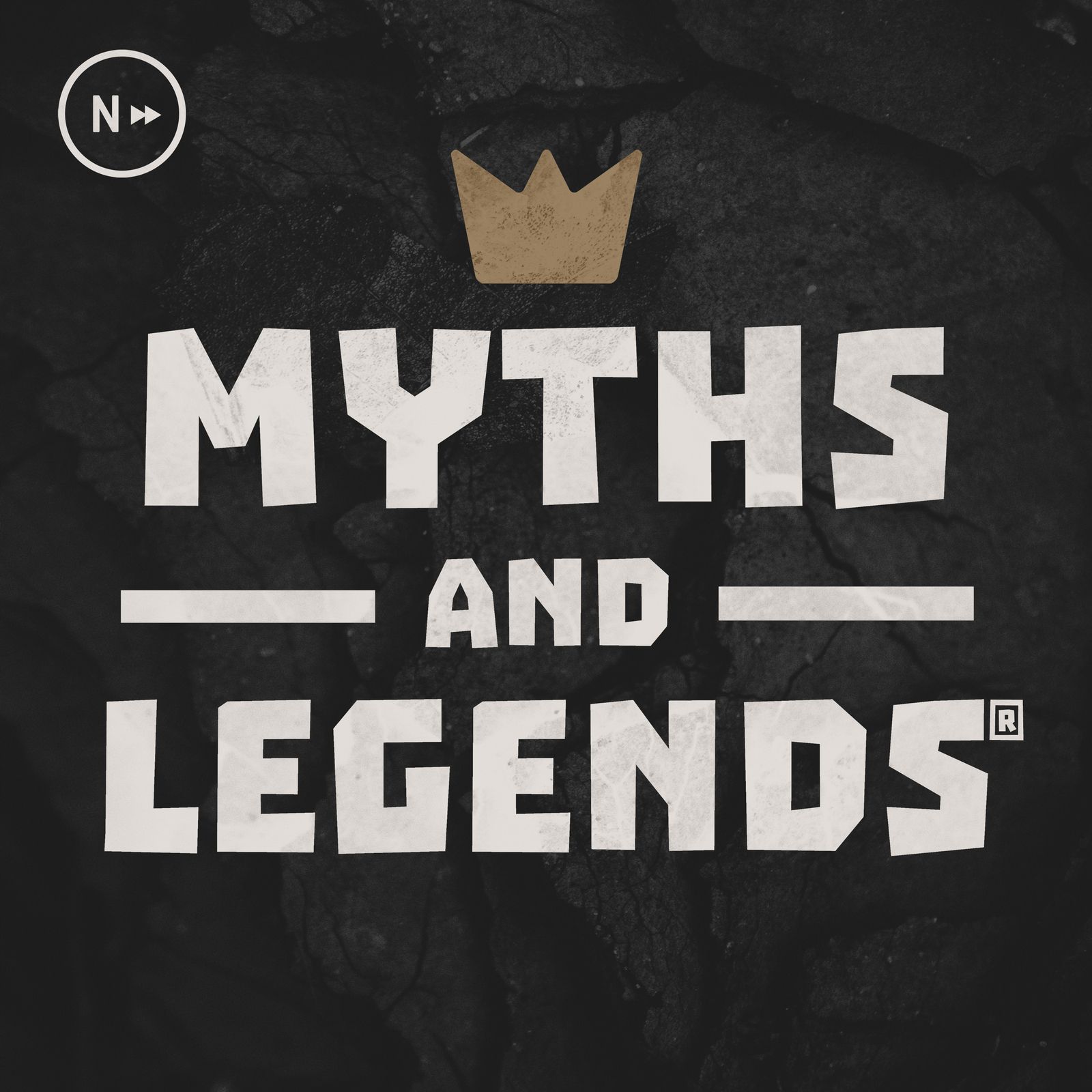
Myth Monsters
A bite sized look into the monsters of global folklore, cryptozoology and mythology with your host, Erin. Jump in and learn about your favourite monsters from Gorgons to Kelpies, to Wendigos to Bigfoot. Stay spooky every Thursday with a new episode with a new monster from another culture. Get in touch on Twitter at @mythmonsterspod
Myth Monsters
Phoenix
In this week's episode, we're looking at the legendary Phoenix from Greek mythology! How do these amazing firebirds get their name? How are they linked to two other legendary birds? Find out this week!
You can find us on:
Social media:
INTRO:
Hello and welcome to Myth Monsters, my name is Erin and I’ll be your host for these little snack bite size podcasts on folklore and mythical monsters from around the world.
These podcasts focus on the actual cryptids, folklore and mythic monsters from global mythology, rather than focusing on full stories of heroes and their big adventures.
I’ll also be dropping in some references that they have to recent culture and where you can see these represented in modern day content so you can learn more, and get as obsessed as I am about these absolute legends of the mythological world.
This week we’re back to our classic myth monsters rather than something more on the cryptid side, and we’re looking at probably the most legendary bird within Greek mythology and that’s the wonderful Phoenix.
DESCRIPTION:
You probably already know what this monster is, but just in case you were a bit lost - the Phoenix is one of the most legendary birds through the ages, represented in most cultures across the world in their own languages. They are usually depicted as mythical firebirds due to their link to the sun and flames.
They are generally described as birds who are red, orange and gold in colour to reflect the rays of the sun and the burning embers of a fire, with a long plume of fiery feathers. They are debated on how big they can be, with some scholars saying that they are indicated to be as large as either an eagle or an ostrich. Although the more common is the former in this case, as the Phoenix was extremely adept at flying. It would usually be depicted as having either a halo or a nimbus over its head - a nimbus is not a broom, but actually a halo with seven little rays coming out of it to represent their link to the sun and the Greek god of the sun, Helios. It would have a crest of feathers around its head resembling a crown of some sorts, as they are believed to be linked to royalty.
There are conflicting stories about the colour of their legs and eyes - but some poets have said that they have red legs and yellow eyes, but others have said yellow legs and blue eyes - so it’s a bit tricky to get to the bottom of. What they all have said though is that they have huge pink talons that could eviscerate prey. They’re also sometimes reported to have healing powers that they can pass onto those who they deem worthy, but they don’t tend to hang around humans by all accounts. But they are reported for having a call like a beautiful song - so that’s nice.
The Phoenix is a bird of prey, much like eagles, and they would most likely have lived on fish, but were large enough to pick up small mammals. However, they could only hunt in warmer waters, as it was believed that cold water would harm them due to their fiery soul of being a firebird I guess. It was believed that they were an embodiment of flame, so I suppose it does make sense.
Sounds pretty normal right? But this bird is anything but, as it’s also famous for being the symbol of rebirth and regeneration - as it’s immortal, but not in the traditional sense. Every 100 or so years, the Phoenix would build itself a nest of cinnamon sticks, and instead of laying an egg to pass on the generation, it would burst into flames upon death, crumbling into a pile of ashes. Within a few hours, a chick would emerge from the soot, and start life over again from the ashes of the old body.
It’s believed that Phoenix’s can live between 500 or 1500 years, so they can also be super old. Also, if they do get injured, they can regenerate and heal themselves, making them practically invincible to go up against and defeat.
It’s also believed that the new Phoenix takes the rest of the ashes in an egg made of myrrh and drops this into the city of Heliopolis in Egypt - which is now Ayn Shams. You might recognise this from a previous episode and I’ll get into why later.
ORIGIN:
Onto my fave which is always the etymology of the word, the word Phoenix, with it’s rather bizarre spelling comes from Latin word fenix.
The Latin word though comes from Greek φοῖνιξ phoinīx. The Greek word was originally in Mycenaean Greek, pronounced like po-ni-ke, which meant 'Griffin' another mythological creature from Greek myth.
Another word that’s similar and is often linked to the word Phoenix is Phoenician - which is an old name for the people of Cyprus and West Africa in the Bronze Age - where the original Greek alphabet was created. So the word Phoenician means ‘those who work with red dyes’ - and so the Phoenix is often called the Phoenician bird. They invented a dye called Phoenician Red, from the crushed insides of a sea snail - and that is a reddish purple colour. You can look up this dye now, it’s called Tyrian Purple in modern days, and it’s considered the colour of royalty - again linking the Phoenix to the kings and queens of old.
However, you could also call someone who was an excellent person ‘Fenix’ or it was also the name of a constellation, so there’s that too.
So here comes the history of this bird and it might ring true to people who have listened to another episode of the podcast recently.
Originally, this bird was not identified as Greek, but as Egyptian. They were originally linked to, you guessed it, the Bennu of Egyptian mythology! I did an episode on this back last year, worth having a listen if you don’t know much about it. But it was a giant crane-like bird that was linked to the Sun and the Egyptian God Ra.
Also another important mention here is the Fenghuang from Chinese mythology - which is another firebird we’ll cover eventually, but they are the Chinese version of the Phoenix - used throughout Asian culture. We’ll cover these another time, but they’re pretty much exactly the same as the Phoenix from the West, but they’ve got a very cool backstory.
However, eventually the Greeks decided to put their own name to the creature as they believed that there were only few Phoenixs in the world, whilst the Bennu were legendary, but pretty common to see. It was believed that there was only one Phoenix living in Greece, much like the Fenghuang in China, but you would generally find more if you went to warmer climates and if someone with any form of magical background summoned them. These birds could become a familiar to anyone who summoned them too, if they really felt like it and it was entirely up to the bird if it judges you worthy.
Mentions of the Phoenix date back to writings from the 6th century BC, which if you didn’t know - was a while ago considering we’re in the 21st now. One of the most famous early mentions is from the Greek poet Hesiod, who writes about the amazing Centaur Chiron teaching the hero Achilles about the legendary bird;
A chattering crow lives out nine generations of aged men,
but a stag's life is four time a crow's,
and a raven's life makes three stags old,
while the phoenix outlives nine ravens,
but we, the rich-haired Nymphs
daughters of Zeus the aegis-holder,
outlive ten phoenixes.
And they were mentioned in a whole load of stuff after that, dating from the 10th century in the Exeter Book (stating that it was the resurrection of Christ - bit of a push there) to poems in the 14th century by Dante in Italy and even being picked up in Henry VIII by William Shakespeare, here’s an extract;
... Nor shall this peace sleep with her; but as when
The bird of wonder dies, the maiden phoenix,
Her ashes new create another heir
As great in admiration as herself;
So shall she leave her blessedness to one,
When heaven shall call her from this cloud of darkness,
Who from the sacred ashes of her honour
Shall star-like rise as great in fame as she was,
And so stand fix'd …
If you wanted to look that up, it’s from Act 5, Scene 5 from that play. This extract was apparently about the coming of age of Queen Elizabeth the first, who was a fiery redhead and royalty, so perfectly representing the Phoenix.
Now is there anything that has ever physically and scientifically been proven to be similar to a Phoenix?
Yes and no - there are theories that the Phoenix could have been something like a long tailed chicken, which is terribly dull - but they are kind of cute to be completely honest. There is actually a type of these called the Phoenix chicken, which very much looks like a normal rooster, and were founded in Japan - the Japanese name for it is the Onagadori.
People also believe it might be the Demoiselle Crane, which is the smallest recorded species of a crane, but are linked to French royalty and also the Egyptian Bennu is a crane-like bird.
Lastly, it’s linked to the Golden Pheasant, which I think is the most likely suspect here - they are absolutely beautiful coloured birds who come from China, but now live all over the world - even in the UK, but they have the gorgeous plumes, although they are only about 105cm long - so it might be a bit too small for our Phoenix.
CULTURAL SIGNIFICANCE:
For art, there’s a load for this one in crests, flags and coats of arms - it’s a legendary symbol of power and of rebirth. You can see this on the flag of San Francisco, the Greek mountain Government or you can see this on college crests too. However, for actual art, you would think there’s more - but there are significantly a small amount. You can see them in Friedrich Justin Bertuch’s 1806 painting, or in the Aberdeen Bestiary. Or you can have a look at some more modern adaptations with independent artists online.
In movies, you’ve got films such as Godzilla, The Lion, The Witch and the Wardrobe, Fantasia 2000, Big Bird in China, Mulan, Maleficent: Mistress of Evil, X-Men, Revenge and Star Trek: First Contact. Obviously the most famous mention of a Phoenix was Dumbledore’s pet Phoenix, Fawkes in the Harry Potter series, who famously helps Harry on most of his adventures and regenerates in the middle of the second movie, Chamber of Secrets - they call this his ‘Burning Day’ which is cute. It’s a very touching little scene, and honestly I think Harry Potter went down the drain as soon as Richard Harris died - but just my opinion there. Also one of the Harry Potter books and movies is called Order of the Phoenix, which is a kind of super magician club that does good, like the Justice League or the Avengers, but with wands and broomsticks.
In TV there is so much more, such as Supernatural, My Little Pony: Friendship is Magic, Stargate, Pokemon Indigo League, Legacies, Merlin, Gargoyles, Avatar: the Last Airbender, One Piece, The Grim Adventures of Billy and Mandy, X-Men, Power Rangers, Digimon, Charmed, Dark Shadows, Conan the Adventurer, The Phoenix, Princess Resurrection, Dragon Ball and Yu-Gi-Oh!
And it's the same for video games, with ones such as Age of Mythology, League of Legends, Warcraft 3, Dota 2, Age of Wonders, Final Fantasy, Golden Sun, Gradius, Kirby, Legend of Zelda: Skyward Sword, Paper Mario, Monster Rancher, Mega Man, Pokemon, Scribblenauts, Soul Sacrifice Delta, Starcraft and Touhou - to name a few here.
For my book recommendation this week, I would shout out Mythologica: An encyclopaedia of gods, monsters and mortals from ancient Greek by Dr Stephen P Kershaw which is a gorgeous illustrated book about Greek monsters. Or you can have a look at Greek Myths: Meet the heroes, gods, and monsters of ancient Greece by Jean Menzies - who I’ve recommended before - that’s a really good one for all your favourite Greek mythological figures.
DO I THINK THEY EXISTED?
Now it’s time for, do I think they existed? Now I’m going to say probably not for this one, I do hate to say it but it’s very literally an immortal bird who bursts into flames and then is like chirp chirp. It’s very unrealistic, but it’s a fun monster nonetheless.
And it’s wild because this one is more frequently used in modern media and myth tellings, and I can see how this is a symbol for rebirth and purity. However, I’m struggling to put this into a real life context here.
The only real excuse I can give for yes, they existed is that they have these three comparisons to real life birds, one of which is very very similar. They also have two other legendary birds from other cultures that back it up - so maybe I am being too harsh - as long as one doesn’t chuck a sword in a hat at me, I’ll be alright. But if you don’t hear from me again, it was Fawkes.
OUTRO:
This monster is a really fun one that’s been in so much modern media and honestly, just idioms for the last few centuries, that I was super excited to cover this one - I also love looking at legendary birds, they give me real Pokemon vibes.
Next week, we’re heading back over to the UK and looking at a legend that everyone knows, and I’m so excited to cover! Yes, we’re heading to the highlands of Scotland for the one and only Loch Ness Monster! Ah, this is so exciting! Come bobbing up next Thursday for this beasty.
For now, thank you so much for listening, it’s been an absolute pleasure. If you enjoyed this podcast, please give it a rating on the service you’re listening on - I’ve got the twitter for any questions, or suggestions on what monsters to cover next and I’d love to hear from you. The social media handles for Tiktok, Youtube and Instagram are mythmonsterspodcast, and twitter is mythmonsterspod. But all of our content can be found at mythmonsters.co.uk - you can also find us on Goodpods and Patreon if you want to help me fund the podcast, ya know if you feel like it.
Come join the fun and share this with your pals, they might love me as much as you do.
But for now, stay spooky and I’ll see you later babes.










